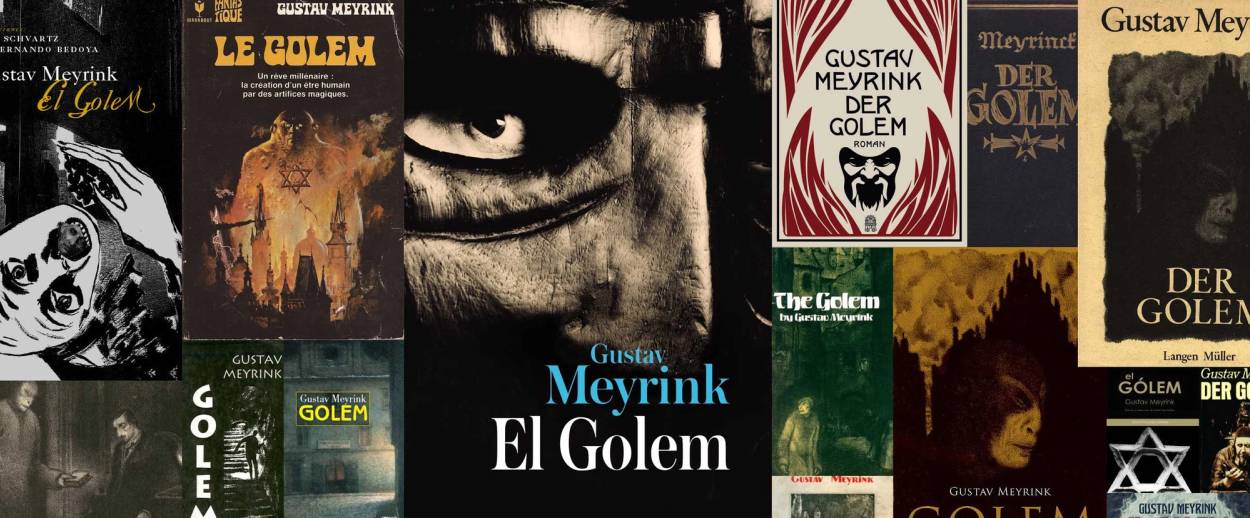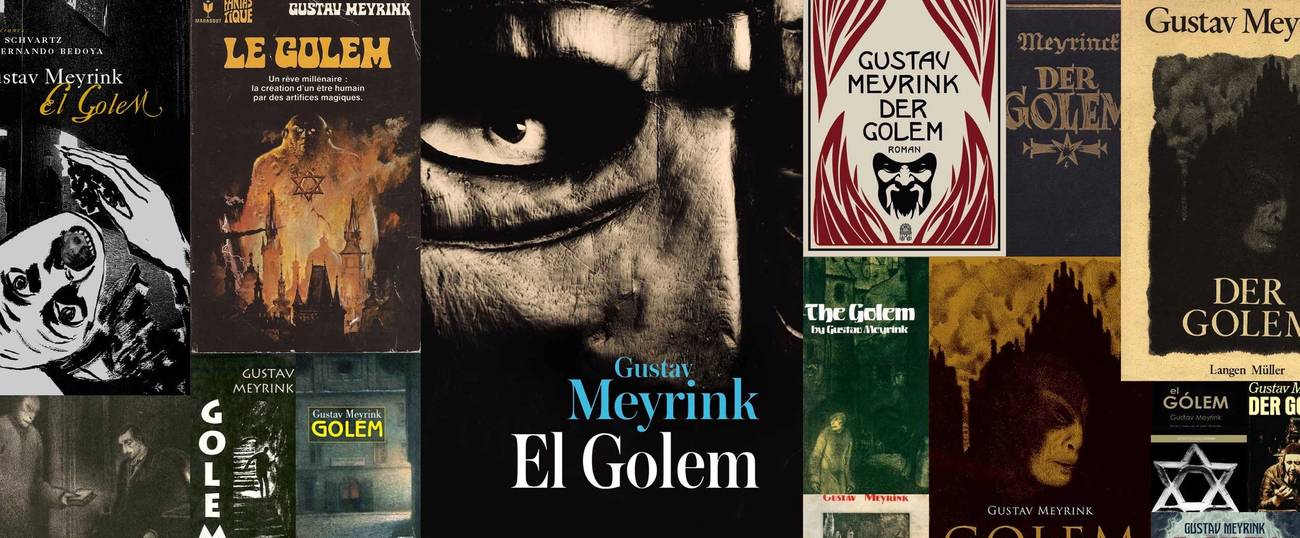A Golem for Halloween
Bookworm: Gustav Meyrink’s 1914 novel is a spectacle of horror and backhanded anti-Semitism. What’s there to be afraid of?




No book has a greater valley between highs and lows than The Golem, Gustav Meyrink’s 1914 story of a man who inhabits the memory of another by accidentally switching hats with him. Truly, it’s a spectacular, breathtaking feat of writing. Meyrink can produce in one paragraph turns of phrases and descriptions that read like a mix of Baudelaire’s prose poems and Stéphane Mallarmé’s poetry, and then in the very next paragraph is able to come up with something that could only have been written for a high-school creative-writing assignment. Meyrink does what any aspiring 17-year-old writer would do and uses fancy words inappropriately and gets lost in near-surreal descriptions full of sinewy adjectives. Reading this prose is like watching someone deftly juggling knives and occasionally stabbing themselves by accident.
Sometimes a golem shows up. The characters are also one-dimensional, and you constantly question if they’re even real. Intended as a work of supernatural fantasy horror, The Golem doesn’t give you any of the gripping narration or swift prose that can keep you up all night like Dracula. It’s less boring than Frankenstein, but isn’t that a low bar? And for a book that tries to meditate on the fabric of memory and place, it manages to draw no tangible conclusions on any of these points. It’s incredibly busy but achieves so little. It is not scary and yet somehow spooky and unnerving. It’s not a good book, or even so bad it’s good. And yet, I can’t quite bring myself to stop reading it.
The Golem opens as the main character stumbles in and out of a dream and finally begins to see the world through the eyes of an art-restorer from Prague’s Ghetto. Over the next several hundred pages he continues to slip into the art restorer’s mind and wanders around with his friends, deals with his neighbors, goes to bars and restaurants, and cobbles together a portrait of the city’s inhabitants. And even though most of the events in this book are almost mundane, over the last century The Golem has become a horror cult classic, somehow lumped in with the canon of supernatural Yiddish horror that blossomed in the early 20th century.
And yet those truly canonical works—such as Ansky’s The Dybbuk and Singer’s Satan in Goray—were actual horror stories, in which Pale Jews encountered demons and the supernatural, and readers were left afraid to sleep in the dark, whereas here I’m left unsettled, confused, laughing at the wrong time, wondering if Meyrink’s rants about Jews are going anywhere, and finally, hoping it’s not too much to ask for one person in this whole book to get torn to shreds by the giant clay monster the book is named after. How the author juggled all these pieces is beyond me. But what I do know is this: Occasionally he drops it all and stabs himself by accident, and it’s spectacular.
At some point, the main character gets accused of murder, but then the whole inquisition goes away as if Meyrink himself got bored of that plotline. And although some like to justify this jarring narration by explaining that The Golem was originally published as a serial in the short-lived but influential Germain periodical Die Weißen Blätter (which also published Kafka, among others), I think there was something strategic or deliberate in the way Meyrink decided to unpack his plot. There is a comfort, however thin, that can be found even in the idea of traditional narrative, and the absence of this narrative is itself unsettling. The Golem epitomizes such a departure. The Golem is not a monster horror story, but a psychological-discomfort horror story, and the golem monster himself is almost relegated to a footnote. The more compelling narrative is not the monster, but the accidental mind-swap.
But what, then, is the role of the golem? The best-known golem origin story is of a Rabbi in Prague who shaped a monster out of clay and then brought it to life. There are some theories that the age-old story of the golem as a clay monster that runs around Prague smushing gentiles and turning on lights during the Sabbath is like the European version of The Protocols of the Elders of Zion, which is to say, a work that purports to be of Jewish origin but isn’t and was only made to look that way so that it can be used as incriminating evidence in the case against Jews. And because, as it turns out, Meyrink was not actually Jewish, this is what I suspect happened here. Meyrink really goes after the whole monster-as-metaphor thing without ever really stating what the metaphor is. Is it the city? The Ghetto? Is time itself the real monster, since the golem only shows up every 33 years? In the absence of any real alternative, I’ve come to realize that the golem—a rarely seen figure in this story—was really just Meyrink’s vehicle for expressing his theories about the Jews. As if somehow writing this book offered a form of catharsis about all of his Jew-related anxieties. There is a golem haunting Europe, and every few decades it reemerges from the Ghetto and digs its claws into our cities and ruins everything and makes the places we’ve known all our lives suddenly look foreign and scary and we have to stop it blah blah blah blah.
Meyrink’s way of describing Jews rivals Dr. Seuss’ for describing magical landscapes. One Jew, two Jew, ginger Jew, business Jew, evil doctor Jew, dirty Jew, friendly simple Jew. Between his zany, dilatory descriptions of the world, Meyrink tried to shoehorn social criticism into the work, like this was finally his opportunity to deliver his manifesto. This also adds to the spectacle that is The Golem. He set out to write a horror story and yet somehow just couldn’t let it go. There are whole extraneous paragraphs describing Jews—something that could have felt relevant only to an inveterate anti-Semite. And so here is another horror story: The slow process of vilifying Jews as dirty people and ultimately as less-than-people was already well on its way in 1914. You can see it take place in The Golem. That is genuinely scary, though not exactly the supernatural scary I’d hoped for.
Alexander Aciman is a writer living in New York. His work has appeared in, among other publications, The New York Times, Vox, The Wall Street Journal, and The New Republic.